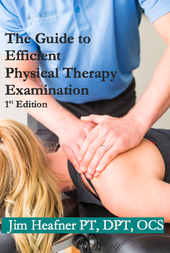- Home
- About Us
- TSPT Academy
- Online Courses
-
Resources
- Newsletter
- Business Minded Sports Physio Podcast
- Day in the Life of a Sports PT
- Residency Corner
-
Special Tests
>
-
Cervical Spine
>
- Alar Ligament Test
- Bakody's Sign
- Cervical Distraction Test
- Cervical Rotation Lateral Flexion Test
- Craniocervical Flexion Test (CCFT)
- Deep Neck Flexor Endurance Test
- Posterior-Anterior Segmental Mobility
- Segmental Mobility
- Sharp-Purser Test
- Spurling's Maneuver
- Transverse Ligament Test
- ULNT - Median
- ULNT - Radial
- ULNT - Ulnar
- Vertebral Artery Test
- Thoracic Spine >
-
Lumbar Spine/Sacroiliac Joint
>
- Active Sit-Up Test
- Alternate Gillet Test
- Crossed Straight Leg Raise Test
- Extensor Endurance Test
- FABER Test
- Fortin's Sign
- Gaenslen Test
- Gillet Test
- Gower's Sign
- Lumbar Quadrant Test
- POSH Test
- Posteroanterior Mobility
- Prone Knee Bend Test
- Prone Instability Test
- Resisted Abduction Test
- Sacral Clearing Test
- Seated Forward Flexion Test
- SIJ Compression/Distraction Test
- Slump Test
- Sphinx Test
- Spine Rotators & Multifidus Test
- Squish Test
- Standing Forward Flexion Test
- Straight Leg Raise Test
- Supine to Long Sit Test
-
Shoulder
>
- Active Compression Test
- Anterior Apprehension
- Biceps Load Test II
- Drop Arm Sign
- External Rotation Lag Sign
- Hawkins-Kennedy Impingement Sign
- Horizontal Adduction Test
- Internal Rotation Lag Sign
- Jobe Test
- Ludington's Test
- Neer Test
- Painful Arc Sign
- Pronated Load Test
- Resisted Supination External Rotation Test
- Speed's Test
- Posterior Apprehension
- Sulcus Sign
- Thoracic Outlet Tests >
- Yergason's Test
- Elbow >
- Wrist/Hand >
- Hip >
- Knee >
- Foot/Ankle >
-
Cervical Spine
>
- I want Financial Freedom
- I want Professional Growth
- I want Clinical Mastery
An 'ankle sprain,' which is often an injury to the Anterior Talofibular Ligament (ATFL), is one of the most commonly treated injuries in Orthopedic physical therapy clinics. Following an acute ankle sprain, patients often present with pain, swelling, decreased strength, decreased range of motion, poor neuromuscular control, and joint mobility deficits. From a purely biomechanical approach, manipulating a region that is hypermobilie is not indicated. However, improving the joint mobility is a necessary component of the treatment plan to restore function. Joint manipulations are high velocity, low amplitude techniques directed at the joint
 Like this post by Dr. Heafner? Check out his Ebook on efficient examination! Use promo code: TSPT50 (valid until 10/8) to save $23 on the book.
5 Comments
Glenn
10/3/2016 10:05:01 pm
Agree with this post.
Reply
Natalie
10/9/2016 05:44:01 pm
Was curious about thoughts for using an ankle manip for chronic ankle issues where ROM is restricted
Reply
10/10/2016 07:41:52 am
Concur with this post.
Reply
Barbara Angela Brown
3/17/2023 10:21:20 am
Ankle Distraction Manipulation be done on 79 women with post polio, osteoporosis?
Reply
8/16/2023 10:00:06 am
I suspect that my sister sprained her ankle during her daily workout routine because she's complaining about acute pain coming from her left ankle. She's refusing to see a doctor, but I think that your insight about how professionals treat ankle sprains could calm her nerves.
Reply
Leave a Reply. |
Dr. Brian Schwabe's NEW Book in partner with PaleoHacks!
Learn residency-level content on our
Insider Access pages We value quality PT education & CEU's. Click the MedBridge logo below for TSPT savings!Archives
July 2019
Categories
All
|






 RSS Feed
RSS Feed